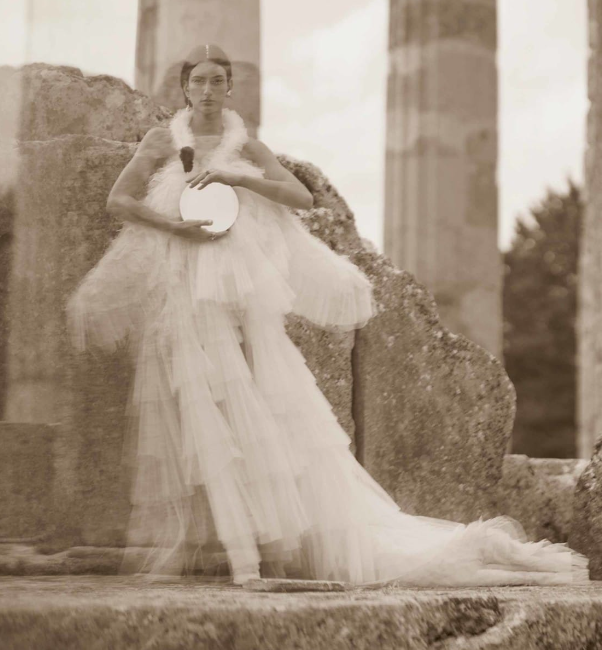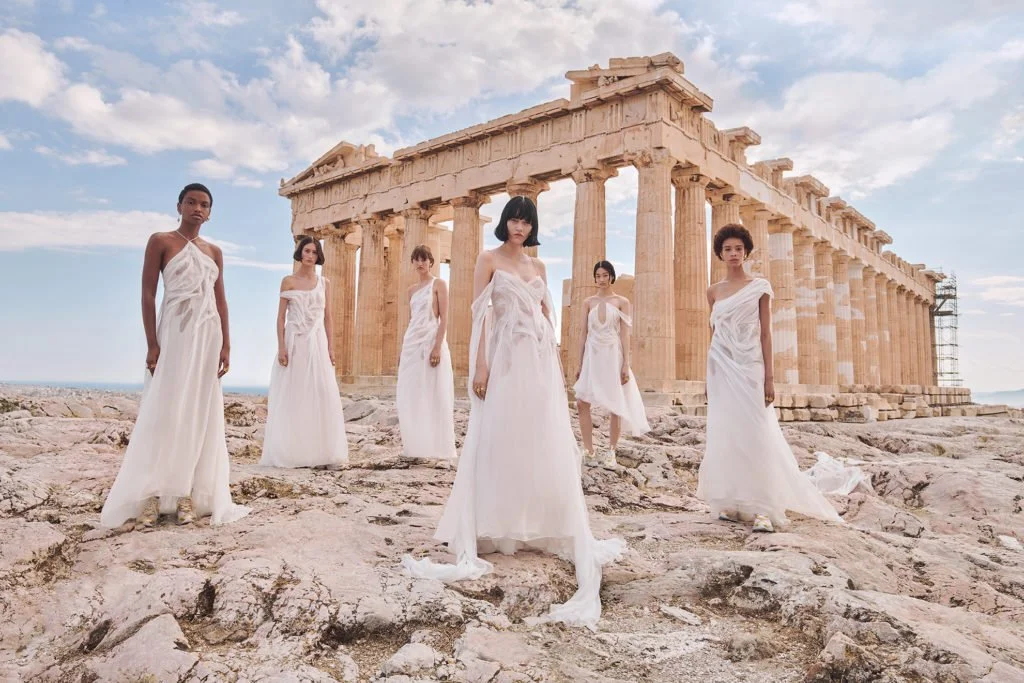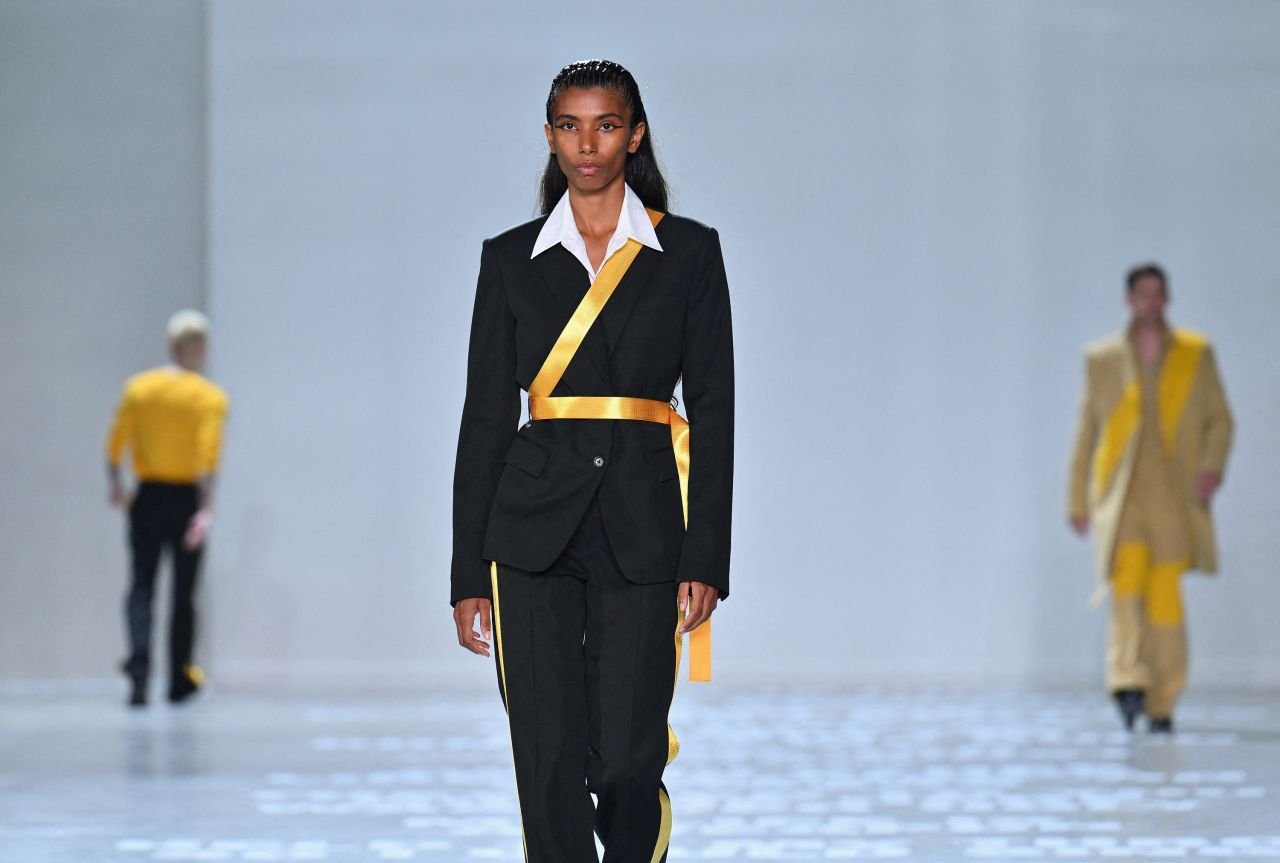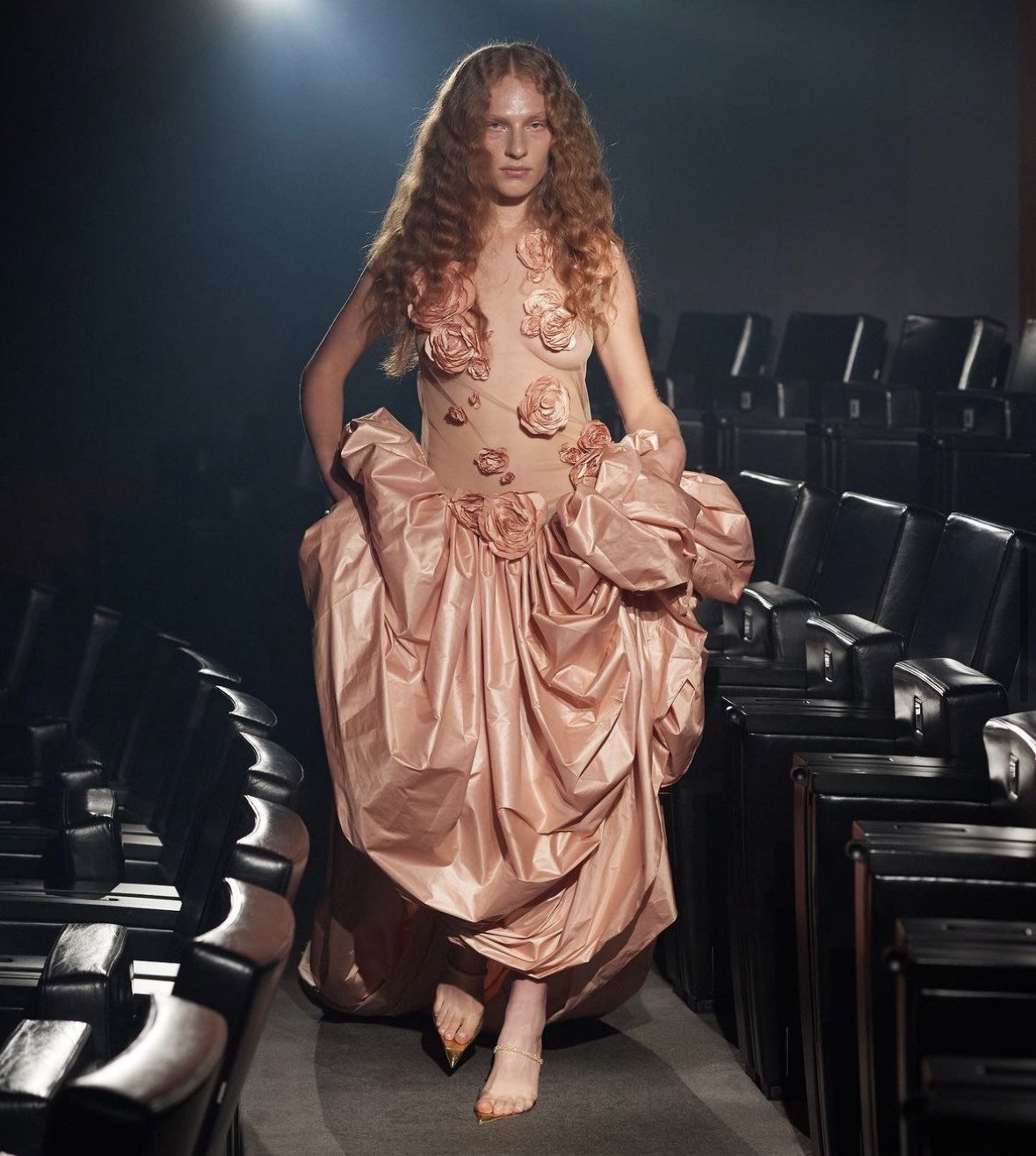Feminism, Mythology, and Dior: a look back at the Dior Cruise 2022
A year on from Maria Grazia Chiuri’s 2022 Dior cruise, I decided to look back at what was undoubtedly a beautiful campaign, and consider the deeper mythological inspirations behind one of the designers’ most epic creations. Chiuri has always utilised a feminist approach in her vision, but even more interestingly she has also drawn from history to express this view. Much of feminist fashion is expressed by taking traditionally “oppressive” aspects of womenswear and subverting them, as a means of reclaiming women’s style from the male gaze and towards the more art-focused and female gaze, such as Vivienne Westwood’s famous corsets and Alexander McQueen’s 2021 Anemones series which blurs the lines between flowers’ blooms and blood spatters. Chiuri’s feminist vision is different, and this difference in feminist vision is what makes campaigns such as this one stand out. Chuiri draws from the ancient source to find an organic and powerfully feminine aesthetic inspired by both ancient, and Dior’s own, history.
There are four major ancient inspirations in this campaign; the Caryatids of the acropolis, Artemis and the Nymphs, Leda and the swan, and Aphrodite herself. All are examples of mythic or artistic women, Artemis, Leda, and Aphrodite as distinct women with their own stories and personalities, and the Caryatids are supportive structures of a temple, like columns, made to look like women.
Artemis, the realm of women, and the male gaze
The first images from the campaign are perhaps the most obvious in terms of their mythical inspiration. The image of Artemis, goddess of the moon and hunting, and protector of unmarried women and children, is possibly one of the most distinctive goddesses in modern media. She’s often depicted with a bow and arrow, as one of the twin archers (alongside her brother Apollo), and in the company of her hunting dogs. Her association with wildness, the forest, and the moon reflects ancient beliefs on the realms inhabited by feminine divinities, and what this said about women.
Dior’s approach to this feminine realm of the forest was to combine beauty, pragmatism, and female friendship under the image of Artemis. With her bow and arrow and her hunting dogs, it’s a deviation from the “fashion” world. Artemis was not a goddess of fashion or beauty, but she was the blueprint for young women. She never married and remained in the company of her female hunting companions (“and historians will call them close friends”). Chiuri chose this representation of Artemis for her Cruise 2022 campaign very carefully. There are more obvious goddesses synonymous with beauty and fashion but that's not what this campaign is about; it's about female power and unity. Within this carefully crafted photoshoot, Artemis’ power is represented through her bow and arrow and her hunting dogs, perhaps reminding the audience of the myth of Actaeon. Actaeon was an ancient king who wandered into Artemis’ forest (perhaps the same forest seen in the background of Dior’s photoshoot) and saw Artemis bathing in her sacred grove. Outraged by his literal male gaze, Artemis transformed him into a deer and set his own hunting dogs on him, dogs such as the ones seen in the photo. He was torn apart for trespassing and seeing the goddess naked. Fashion has a reputation for trying to appeal to the male gaze, but when Maria Grazia Chiuri chose Artemis as the focus of this shoot she sends a very different message; that women’s fashion isn’t about appealing to men, it's about empowering women and expressing the same strength as Artemis’.
New Caryatids
One of Dior’s most iconic campaigns was the 1951 Parthenon photoshoot, where models dressed in the now famous Dior 50’s full-skirt evening gown posed on the Acropolis against the ancient temples of Athena and Hephaestus.
The colour photo on the left features the temple of Hephaestus, which was used again in the 2022 campaign, a call back to the Dior of the 1950s. The black and white photo on the right is the Erechtheion, the temple of Athena. In both of these photos the models stand in front of the backdrop, next to the Caryatids the difference in style is clear, the silhouette of a woman must reflect the 1950s standard. It could have been a reference to the newfound control of said silhouette, where the clothes change the body shape of the woman. Additionally, the models stare in different directions, part of the scene but quietly reflecting on the two very different time periods.
Chuiri pays homage to two things in her 2020’s interpretation. Dior’s own history and impact on fashion, and the changing views of women within the modern fashion world. In her re-interpretation the models are not placed across the scene to be viewed by the audience, and nor are the dresses structured for a different silhouette. The models are dressed simply, the clothes draped across their bodies like the Caryatids, the women wearing the clothes as opposed to the clothes wearing the women.
The stance of the models is also distinctive. In 1951 the models posed against the scene, in 2022 they stood head-on, with the same defiant stiffness of the Caryatids in the background. The ancient female statues convey strength and serve a structural purpose which is expressed artistically through the clothing and poses of the models. In 1951 the models were standing alongside the Caryatids, in 2022 the models were embodying the Caryatids. It’s not just an artistic reimagining but a feminist one as well, women are not simply decorative, they have a strength and purpose which is as crucial as the Caryatids holding up the temple. The temple in question, the Erechtheion, is dedicated to Athena, a goddess associated with Athens’ military might and cultural strength, the models emulating the Caryatids emulate this same strength and purpose.
Leda and the Swan
When it comes to statement pieces as opposed to style, many collections have one singular look or item which encapsulates the theme as a more theatrical, less wearable design. For the Dior cruise this is undoubtedly the swan dress which was also chosen, and perhaps even designed, to close the runway show. With such a focus on its construction and role in the campaign, needless to say, there's a great deal of thought and planning behind such a look. As with the previous two styles this dress also has a direct link to one specific ancient woman, Leda, the queen of Sparta and mother of Helen of Troy. Where Artemis and her nymphs represent sisterhood, and the Caryatids denote strength, Leda’s story is far more tragic. Leda was assaulted by the king of the gods, Zeus, in the form of a swan, and as a result of this Helen was born from an egg. It's a violent and depressing myth, especially since Leda never got any kind of justice for what was done to her. And as with most Greek mythology, it's all Zeus’ fault. So why choose a woman who was famously made a victim, as the inspiration for the closing design of the campaign?
Chiuri outright stated, in an interview with Fashion Network, that it was inspired by both the myth and a dress worn by Marlene Dietrich in 1935. “I think she [Dietrich] is very important to the history of Dior, and I was fascinated because I found these images of her dressed up as the mythological figure of Leda…The idea of movement, an active woman, a very good relationship with the body and with freedom.” Marlene Dietrich was famously strong-willed, ironic that she would dress as Leda when she herself was so associated with women’s freedom of dress and expression. Interesting that this idea of expressing freedom through the figure of Leda has come about again in the last few years, not only through this Dior show but with Hozier also releasing a song, “Swan Upon Leda”, in 2022, in response to the overturning of Roe v Wade.
Throughout history, the image of Leda (the image of a woman and a swan) has been a common motif, in the renaissance in particular. The Uffizi gallery in Florence for example, has countless statues, paintings, and depictions of Leda. Always the victim, Zeus’ identity as the perpetrator is masked by his disguise as a bird as if to say that women are simply victims of nature itself. However, the image of the Dior Leda dress is not one of a woman being victimised, but wearing the swan in a defiant stance. The big difference between this image and the ones in the Uffizi? This woman is not being attacked by a swan, she’s wearing it as a dress. She can move freely as Chiuri stated, she's not confined or afraid. In recent years, as Hozier pointed out, women have been pushed backwards in terms of freedom. Interesting that Chiuri is using a woman who famously gave birth to her attacker’s child, to express the idea of womanhood and freedom.
Chiuri is encouraging women today to not allow victimhood to be placed upon them by male artists throughout history, as Leda’s was. Rather, she subverted the myth and had the model hold a mirror up towards the viewing audience. Literally, holding a mirror up to a world that looks at women and sees Leda.
Modern Aphrodite
Image Dior
The final look of the campaign which chimed really strongly with me, as an example of Chiuri’s ancient inspiration, was the modern Aphrodite look. The focus of this series of images was jewellery and the ocean. Within the scene the model stands in the sea, emerging in the same way Aphrodite was born, decked in gold and pearls. Just like Leda and the swan was a common image in historic art, both ancient Greek and the renaissance, Aphrodite/Venus was commonly depicted in this exact moment, her birth. In the modern world, Aphrodite is mostly thought of as a goddess of beauty, but in a modern way, her image is one associated with Valentine's day and the bright pink dress, and long blonde hair combination we’ve seen in films and TV shows like Disney’s Hercules or Xena: Warrior Princess. However, this is more of an example of modern artists, writers, and media looking at Aphrodite through a modern lens.
But Aphrodite had many names in ancient Greece, each referencing a different type of Aphrodite. One of the most famous was undoubtedly Kypris.
Kypris, which basically means “the one from Cyprus”, was famously used to remind the ancient Greeks of exactly where Aphrodite came from. She wasn’t quite the same as other gods, technically she wasn’t even a god, she was a Titan. See, despite how modern media downplays love and beauty, Aphrodite was actually born from a really violent act. She was born when Uranus’ genitals were, ahem, lopped off and thrown in the ocean by his own son. She then emerged from the sea foam and stepped ashore, wreaking havoc on the people of the island when they didn’t worship her enough (there’s a bit too much myth to get into here, but it involves cursing a princess into falling in love with her own father, and apparently inventing the world’s first sex workers). Aphrodite is the goddess of love and beauty, seated among the Olympians. Kypris is the devastating effect of love and beauty.











